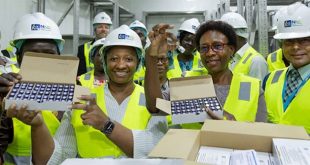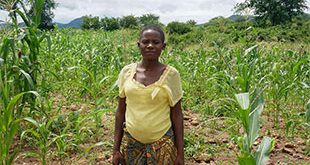While there is a concern that combining samples may make it more difficult to detect positives, since pooling in the laboratory dilutes any viral material present in the samples, Quest’s validation data demonstrates that its test correctly identified all of the pooled samples that contained a positive sample.
For ART monitoring, pooling has been shown to be accurate and efficient; for EID it has not been tried although modelling shows it to be promising. The final part attempts to place pooling into the context of current mother-to-child transmission of HIV and ART programmes and their expected trajectories over the next years.
Several points warrant consideration: pre-selection to exclude samples with an elevated pre-test probability of positivity from pooled testing, the use of dried blood or plasma spots, and choosing a pooling strategy that is both practically feasible and economical. Finally, novel ideas are suggested to make pooling even more attractive.
The trick is to pool test samples from patients with a low probability of being positive. This could be done by using information available from request forms. For example people on ART with previously undetectable viral load, or babies born to mothers stable on ART, would have a low probability of being positive. If most pools have negative results, fewer tests are needed and costs are saved. But if a pool tests positive, the necessary de-convolution negates any saving.
The prevalence of the condition to be identified and the pool size determine whether pooling makes sense. Pooling is only beneficial if what the test seeks is relatively rare.
We propose risk stratification by excluding patient samples with a high probability of being positive from pooling. For example, infants whose mothers did not receive ART (their infection risk may be as high as 25%) or patients who were not doing well on ART.
Larger pool sizes seem tempting – after all, the more samples share one test, the greater the potential saving. But the more samples in a pool, the higher the chance of a positive result. Other factors to consider when determining pool sizes are ensuring sufficient sensitivity and the acceptable turn-around time for laboratory results.
Pooling and deconvolution add to staff workload, which may introduce clerical errors. We suggest “pipetting robots” that, if well programmed, could automate these procedures while minimising the risk of mistakes. These robots are widely used in high-income countries, but still rare in low resource settings. They are sophisticated but so are the testing platforms, and the additional investment can help to get maximum leverage out of those.
Future use
Pooling offers an option for African countries to increase access to early infant diagnosis and viral load testing, two tests listed by the World Health Organisation as essential. It does not address all challenges but may optimise the use of centralised laboratory facilities.
The experience of the COVID-19 pandemic may provide the stimulus needed to conduct large-scale pilot studies. At first, studies could use pooling in parallel to individual testing to demonstrate that it is not inferior in real-life use. At a later stage, pooling could be introduced where there is poor availability of early infant diagnosis and routine virological monitoring.
****
Article by Prof. Wolfgang Preiser is the Head: Division of Medical Virology, Stellenbosch University, was used here.
Source: theconversation
 The Independent Uganda: You get the Truth we Pay the Price
The Independent Uganda: You get the Truth we Pay the Price



